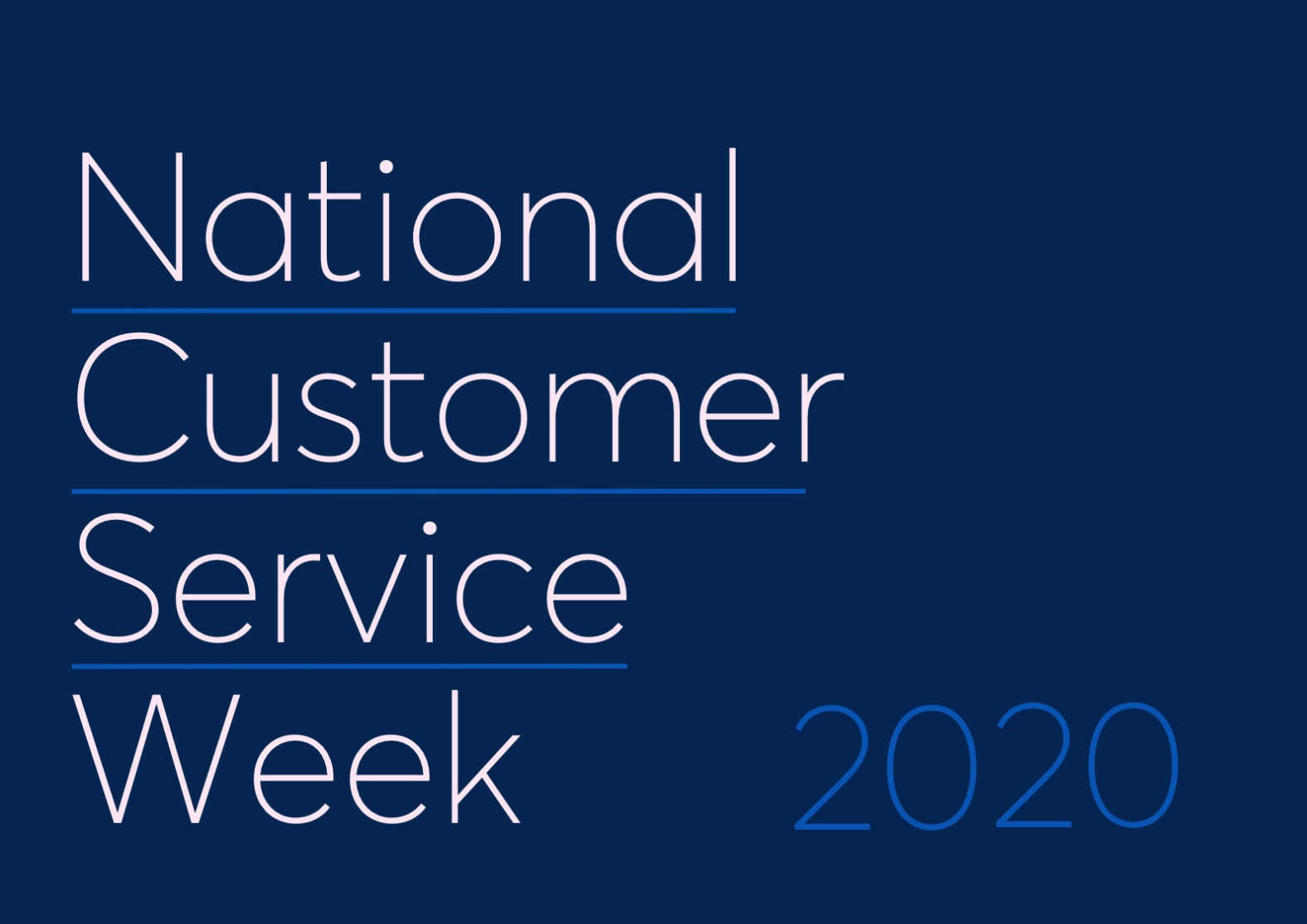Supply Chain (SCM/SCE)
Supply Chain Management (SCM) Software, Supply Chain Optimisation, Supply Chain Execution, hardware transport, supply-chain, distribution software, freight software and load planning in manufacturing and supply chain applications.National Customer Service Week 2020: Key insights from business leaders in the tech sector

Last week marked National Customer Service Week 2020 and it fell under extremely different circumstances compared to previous years. The Covid-19 pandemic has resulted in the majority of organisations having to rethink their customer service strategy as the working landscape has changed so drastically. A recent survey of 2,000 office workers from the British Council for Offices (BCO) has found that employees at all levels, from executives to trainees, intend or hope to divide their time in future between their homes and their workplaces.
This shows businesses have needed to adapt not only their immediate customer service methods but their future plans too. Covid-19 has been a catalyst for drastically increased digital transformation and the businesses that adapt to this best and continue to provide their customers with the same pre-pandemic support will continue to thrive.
In this article, industry experts from a range of technology disciplines explain why providing the best possible customer service is so crucial in the new environment we find ourselves in.
Always ensure clear communication

Simon Johnson, General Manager UK and Ireland, Freshworks, explains that as most consumers turn to digital channels, it is essential businesses continue to engage with them during a potential second lockdown. “Silence is not an option,” Simon argues. “Owing to the current situation, businesses are now likely to be dealing with up to five generations of consumer online, each with their own communication preferences. Businesses can’t afford to just invest heavily in one tech-savvy area at the risk of older, or more traditional consumers. An onmi-channel solution must be in place. This enables businesses to integrate all the channels they provide support on, meaning customers can reach out via a method that makes the most sense for them, and switch between channels, all while receiving a seamless experience. This also provides multiple platforms for the business to collect customer data on. With more data, a business can build a better picture of the consumer and deliver a better experience for them.”
“Our recent research found that 63% of businesses say it’s been more difficult to keep their sales force productive and engaged in the Covid-19 era. Finances are hard for many people who have lost their jobs or remain on furlough, so naturally sales are going to be lower. That being said, people still want to keep in touch with the brands they respect and understand what they are doing as a business during this time. A lack of communication and marketing at this time could have a significant impact on loyalty and trust. But this time doesn’t necessarily have to be about selling. The same research found that 83% of sales teams were using the current environment as an opportunity to build better relationships with customers.”
Take a customer centric approach

Roberto Sigona, Chief Customer Officer at Qlik, is a firm believer in taking a customer centric approach. “This involves putting the customer at the centre of everything you do and putting yourself in their shoes so you can look at things from their perspective,” he explains. “Business leaders must ensure they recognise the current struggles of their customers and make the necessary changes to provide maximum support. It must all feed into how we design products, define go-to-market strategies, make decisions, and drive daily engagements with customers.
Customer centricity is also about sharing responsibility for the success of customers across an organisation. Customer success is a team sport and a company mindset – everyone in the business plays a role, not just post-sales services and support teams. At Qlik, for example, we’ve made fantastic improvements in customer success by encouraging greater collaboration across the company: the creation of a Customer Success Organisation (CSO) is helping better align all post sales services and support customers’ needs, while the hiring of my role – the Chief Customer Officer – is helping bridge the gap between customer needs and the C-suite. Building customer relationships and empowering them to achieve more with your products and services can’t be the responsibility of one group if you want to ensure that every experience a customer has with your company is a positive one.
Utilise this time to strengthen customer relations

“National Customer Service Week is a timely reminder retailers no longer need to rely solely on others to market and sell their products, as the ability to now go direct to the consumer (D2C) has changed how retailers operate when delivering excellent customer service,” argues Dave Rosenberg, Head of Marketing, Business Development and Private Equity for EMEA, Oracle NetSuite.
One distinct advantage D2C businesses have over traditional brands is their ability to cultivate a loyal customer base. Shoppers today are focused on finding brands with values that align with their own, and they then become engaged, loyal followers of that brand. This is the community that will support initiatives like new product releases or pop-up events, or advocate for brands on their behalf.
Most retailers have changed their communication with customers during the last few months, but D2C retailers have used this time to really deepen their relationship with customers. Having a deep understanding of your typical customer profile helps retailers to spend advertising budget wisely while leveraging free channels like social media to pull in prospective and existing customers. It’s a challenging time for all retailers but brands can succeed in the current landscape by learning from their D2C counterparts to deliver customer service which goes above and beyond.
Learn from mistakes and plan ahead

“When it comes to thinking about customer service on the back end, Covid-19 has unexpectedly exposed the contact centre industry as unprepared for the situation we find ourselves in,” argues Faisal Abbasi, MD UK & Ireland, Amelia, an IPsoft company. He expands further, “Imagine all the contingency planning meetings, and yet we still have call centres unable to respond to basic questions about customer orders. As well as this, many organisations’ business continuity plans for their contact centre were to outsource the work to another office or country, but the global nature of this crisis has made that difficult, if not impossible. Customer service queues and hold times are significantly up as call volume increases with physical stores and branches closed, while customer satisfaction is nosediving. What’s more, adding more human customer service agents is not a cure-all and contact centres are likely to be faced with a large remote workforce in the coming weeks and months.
“It’s in this context that call centre operators are speeding up their transition to cloud-based Digital Employees that can field and triage customer calls and inquiries on the first touch, then answer questions and process inquiries, and only route calls to human agents when necessary. In the new coronavirus era, these cognitive AI-powered Digital Contact Centre Agents will be vital to ensuring that companies can retain the same standard of communication with their customers. This will not only support improved customer loyalty by increasing the time to resolution for customer enquiries, it will significantly improve the experience of overburdened human agents that are currently unable to respond quick enough to ensure a positive brand encounter.”
Customers must feel appreciated to remain loyal

Neil Hammerton, CEO, Natterbox, summarises well the lessons all business leaders must take from the events of 2020. While no one could have predicted the environment we find ourselves in, organisations owe their customers the same level of customer support now we have all had time to adapt. “At the beginning, businesses were doing their best to survive,” he explains. “Concessions had to be made, which often meant making sacrifices and implementing a tactical response to a volatile environment. On the whole, customers understood and accepted that, and businesses experienced a certain level of ‘customer leniency’– a higher level of understanding from customers when services didn’t meet pre-pandemic standards.
“But as the months have passed and organisations have had more time to scope out their surroundings, it’s become clear most of these quick fixes have been made with the short term in mind. What’s more, this customer leniency is fading, and customer standards are rising back to what they were a few months ago.
“Now and especially in light of National Customer Service Week, businesses must recognise the need to accommodate customers’ long-term needs. They must take this opportunity to unite their tech, people, and processes and show customers their true value. This means updating legacy technologies, recognising the needs and demands of both customers and employees, and tying them together with a reassessment of business processes – including improved training and communication with the C-suite.
“The future is still uncertain. But one thing is sure, as always, customers must feel appreciated to remain loyal to brands in a post-pandemic world. Tactical solutions will no longer cut the cake. Long-term strategy will.”










